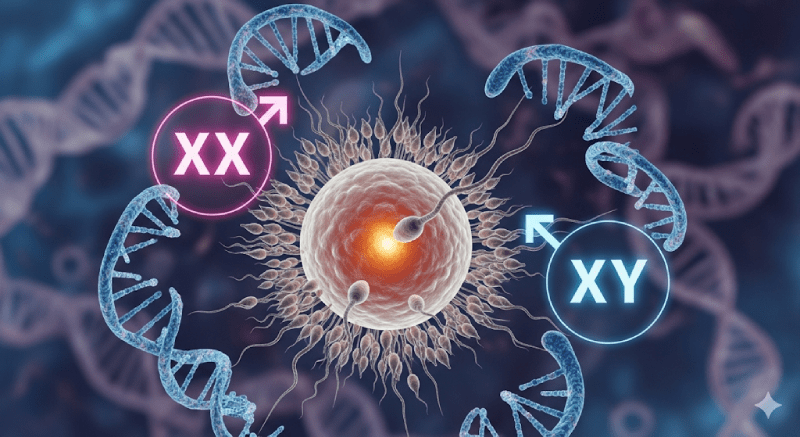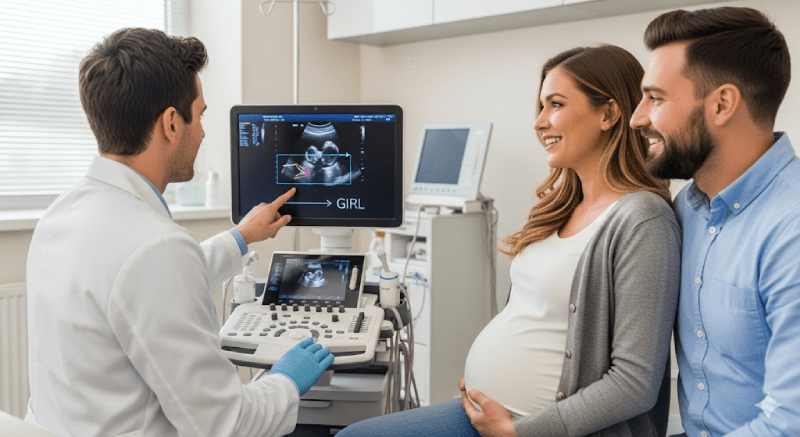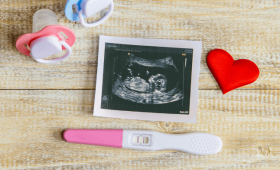Introduction: Understanding Gender Selection: Why and How?
The possibilities offered by in vitro fertilization (IVF) technology have gone beyond providing a glimmer of hope for couples struggling with infertility. They now enable informed decisions about genetic health and even the gender of the future child before pregnancy occurs. Gender selection is the process of determining the gender of the child before conception. This procedure is not possible with a naturally occurring pregnancy and can only be performed definitively as part of an IVF treatment through a method known as preimplantation genetic diagnosis (PGT).
This report is prepared as a roadmap, particularly for couples considering this process in the context of a “cure holiday.” Gender selection is not merely a technical procedure but a multi-dimensional decision that requires serious psychological, ethical, and financial considerations. This guide aims to provide a deep and balanced perspective on every aspect potential patients may encounter.

Part 1: Scientific Foundations and Application Methods of Gender Selection
The basis of gender selection is formed by genetic diagnostic tests applied during IVF treatment. This process involves the fertilization of the egg and sperm in a laboratory setting and the genetic examination of the resulting embryos before they are transferred to the mother’s uterus.
Primary Method: Preimplantation Genetic Diagnosis (PGT)
PGT is a genetic examination method performed by taking one or more cells from the embryos obtained during IVF treatment. The main purpose of this procedure is to identify embryos at risk for hereditary diseases or chromosomal disorders and to ensure that healthy ones are transferred. Gender selection is possible as a by-product or a special subset of this genetic screening, by examining the sex chromosomes.
The PGT procedure is fundamentally the same as the steps of IVF treatment. After the egg retrieval procedure, the embryos fertilized in the laboratory undergo a procedure called a biopsy on their 3rd or 5th day of development. The cells taken during the biopsy are genetically examined, and the embryos that are determined to be healthy and of the desired gender are selected and transferred to the mother’s uterus.
Details of Embryo Biopsy: Day 3 and Day 5 Methods
The timing of the embryo biopsy is of critical importance for the reliability and success rate of the test.
- Day 3 (Cleavage stage) Biopsy: At this stage, when the embryo consists of approximately 6-8 cells, only one cell (blastomere) is taken. The biggest disadvantage of this method is that the single cell taken may not represent the entire embryo, which increases the risk of mosaicism and the possibility of obtaining an incorrect result.
- Day 5 (Blastocyst stage) Biopsy: This method, which is now frequently preferred by genetic laboratories and clinics, is applied at the blastocyst stage when the embryo has approximately 100 cells. At this stage, 5-10 cells are taken from the outer layer (trophectoderm) that will form the placenta, without damaging the inner cell mass that will form the baby. The ability to obtain a larger cell sample makes the genetic test results much more reliable and accurate. Furthermore, this biopsy method has the potential to cause less damage to the embryo. These technical differences directly affect clinical success rates, and for this reason, the Day 5 biopsy is more recommended by experts.
Among the genetic screening techniques used for gender determination, PGT-A (aneuploidy screening) screens embryos for 24 chromosomes to detect numerical chromosomal disorders, while simultaneously examining the sex chromosomes. Advanced technologies such as next-generation sequencing (NGS) and FISH are also used in this process.
Another Method: Sperm Sorting (MicroSort)
Another method used for gender selection is the MicroSort technique, which aims to separate X and Y chromosome-carrying sperm before fertilization. This method aims to increase the probability of creating an embryo of the desired gender. However, the effectiveness of this technique is not as definitive as PGT.
At this point, it is necessary to make a critical distinction regarding success rates. The accuracy rate of determining the gender of an embryo with the PGT method is extremely high, at %99 to %99.9. This rate refers to the success of definitively diagnosing the gender of an already existing embryo. In contrast, the accuracy rates stated for the MicroSort method (%70 for a male baby, %75-80 for a female baby) indicate the probability of a sperm with the desired gender fertilizing an egg before fertilization. This fundamental difference between these two methods is of great importance for couples to have realistic expectations.
Comparative Analysis of Gender Selection Methods
| Method | Basic Principle | Application Stage | Accuracy Rate (in Gender Determination) | Main Purpose |
| PGT | Genetic screening after embryo biopsy [1, 6] | After fertilization, before embryo transfer [1] | 99% – 99.9% [2, 8] | Detection of genetic diseases/anomalies and selection of healthy embryos [6, 7] |
| MicroSort | Separation of sperm by gender [9, 10] | Before fertilization [10] | 70% – 80% [9] | To increase the probability of obtaining an embryo of the desired gender [10] |
E-Tablolar’a aktar
Part 2: Advantages and Potential Benefits of Gender Selection
Gender selection in IVF is a method that can offer various benefits, both for medical necessities and social preferences.
Medical Justifications and Genetic Health
The most significant and ethically least controversial advantage of gender selection is the prevention of sex-linked hereditary diseases. Some genetic diseases, such as hemophilia or Duchenne Muscular Dystrophy, are genetic disorders specific to a single gender. If one or both parents are carriers of these diseases, it is possible to select embryos of the gender that does not carry the risk of the disease among those genetically screened using IVF and PGT. This minimizes the family’s chance of having a child with a genetic risk, offering a chance for a healthy pregnancy.
In addition, since the PGT method evaluates not only the sex chromosomes but also the general chromosomal health of the embryo, it ensures the transfer of embryos without anomalies. This can increase the overall pregnancy success rate and reduce the risk of miscarriage.
Family Planning and Social Reasons
Another important benefit of gender selection is to ensure “family balancing”. Couples who already have several children of the same gender may resort to this method to have a child of a different gender. This is a very popular choice, especially among couples who do not suffer from infertility but want to balance their family structure. This demand shows that gender selection is marketed as a medical service in its own right and is a fundamental dynamic that feeds the “cure holiday” concept.

Part 3: Risks, Disadvantages, and Ethical Dilemmas of Gender Selection
In addition to the potential benefits it offers, gender selection also brings with it a series of medical, ethical, and social risks that must be considered.
Medical and Procedural Risks
Although the biopsy procedure is safe, there is a small risk of damaging the embryo or reducing its potential to implant in the uterus. Furthermore, even though the accuracy rates of gender determination are high, obtaining a final pregnancy is not guaranteed. Pregnancy success depends on many different factors, such as the woman’s age, egg and sperm quality, the effectiveness of the techniques used, and the experience of the experts.
Ethical and Moral Debates
The most controversial aspects of gender selection revolve around ethical and moral issues. At the top of these is the status of “unwanted” embryos. Couples are faced with the question of what will happen to embryos that are genetically completely healthy but are not of the gender they prefer. This situation deepens the moral debates on the status of the embryo and the right to life.
Gender selection carries the risk of exacerbating gender inequality and social disparities by leading to a preference for a certain gender (usually male) in some societies. This potential societal impact is seen as one of the serious problems that may arise if the practice becomes widespread. Furthermore, this technology is seen by some circles as part of the quest for “genetic perfection,” raising ethical questions that question the value of genetic diversity and differences.
Psychological and Social Risks
The IVF treatment process itself can already place a significant psychological burden on couples. It can lead to depression, anxiety, and sexual dysfunction in women, while it can cause reduced self-esteem, loss of confidence, and feelings of guilt in men. The addition of gender selection to this process can further increase this stress, especially when combined with expectations from the family and social pressures. Couples also have to consider issues such as the disappointment that may be experienced in the event of not having the “desired” gender and the potential effects of this situation on their children’s identity development.
Part 4: Legal Regulations and Global Situation
Gender selection is a topic subject to legal and ethical regulations that vary from country to country around the world. These legal differences form the basis of the “cure holiday” concept.
In Turkey, gender selection is a legally prohibited practice for social reasons. Institutions such as the Turkish Bioethics Association and legal legislation allow gender selection to be applied only in exceptional medical cases, such as the existence of sex-linked genetic diseases like hemophilia. This situation causes couples in Turkey who demand this procedure for social reasons to turn to countries with more flexible laws.
For example, in some countries such as Cyprus and the United States, gender selection can be legally applied for social reasons such as family balancing. This has made these regions popular destinations for IVF tourism. On the other hand, in some European countries like Germany, similar to Turkey, the practice is only possible under medical necessity.
This variability in legal regulations shows that the same service is subject to different rules in different geographies. In addition, recent legal debates in England regarding the definition of “biological sex” reveal that this issue has become part of a broad social and political agenda rather than just a medical procedure.

Part 5: Treatment Process and Cost Analysis
Before starting gender selection treatment with IVF, couples need to understand the steps and costs of the process in detail.
The treatment process usually begins with an initial consultation, followed by preliminary tests (hormone analysis, ultrasonography, etc.), ovarian stimulation, egg retrieval, fertilization, embryo biopsy, genetic analysis, and finally, embryo transfer.
Cost is one of the most critical practical elements of this process. Research shows that the cost of an IVF treatment integrated with gender selection can vary over a wide range. For example, in Cyprus, an IVF treatment with PGT has a starting price of around 5,000 Euros, while combined methods can increase this cost to 6,200 Euros. However, these prices usually do not include medications, preliminary tests, accommodation, and plane tickets. According to another source, the general treatment fees can vary between 2,250 Euros and 10,000 Euros depending on the patient’s medical condition. In a clinic in Turkey, the average cost is stated to be 3,200 Euros.
It is of great importance for couples to consider the total package cost, which includes not only the cost of the procedure but also additional expenses such as medication, genetic tests, travel, and accommodation, when planning this process. This transparent approach allows potential patients to plan their budgets more realistically.
Average Costs of IVF Treatment with Gender Selection
| Cost Item | Description |
| Treatment Fee | The basic cost of the IVF and PGT procedure. |
| Medications | The cost of medications used for ovarian stimulation. |
| Preliminary Tests | Blood tests and ultrasound examinations performed before treatment. |
| Genetic Test Fee | The additional cost of the PGT test applied to the embryos. |
| Travel & Accommodation | Travel and accommodation expenses to the country where the treatment is performed. |
E-Tablolar’a aktar
Conclusion: Critical Considerations for an Informed Decision
Gender selection in IVF is one of the most significant developments in human reproductive technology, but it is a complex and multi-layered issue. On the one hand, it gives families the hope of having a healthy child by preventing the transmission of genetic diseases for generations, while on the other hand, it brings with it serious ethical, legal, and social debates.
It is vital for couples evaluating this decision to fully understand the scientific foundations of the process, its potential benefits, financial obligations, and ethical dilemmas. It should be remembered that high accuracy rates do not absolutely guarantee pregnancy success, and the procedure itself can be emotionally and financially exhausting.
Therefore, it is strongly recommended that couples consult extensively with a reproductive health specialist, genetic counselor, and psychological support specialist before starting this process. The decision to be made should not be just a technological choice but the result of a conscious and responsible evaluation that also considers the long-term well-being of the couple and the child to be born.
For more information or to request a personalized assessment for your situation, it is recommended that you consult with our experts.



